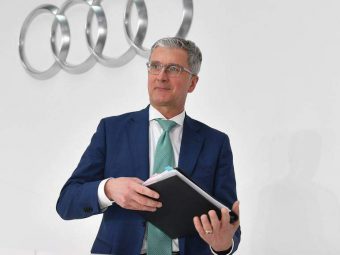By Giles Milner, August 30, 2018
Aston Martin is enjoying a sustained period of record growth. Operating profits have risen 14 percent during 2018 which translates into £106m. Revenues are up 8 percent to £444.9m and pre-tax profits are also up, slightly, to £20.8m. Aston Martin CEO, Andy Palmer, believes now is the time to offer a portion of shares to the wider public.
The whole point of a public flotation is to raise capital, such a move is beneficial to the spectrum of private investors currently in ownership of Aston Martin. The money would go straight to these investors, they will decide where and how and to whom that money is distributed. The consortium of investors, initially comprising of two Kuwaiti companies and an American investor, purchased Aston Martin for £475 million in 2007. Ford sold the loss-making company on the cheap to cut its own costs and increase profits. Italian Private equity firm Investindustrial purchased 37-percent of Aston Martin shares in 2012 at a cost of £150m. The main shareholders will benefit from the stock market flotation and that’s why Aston is going down the route of IPO. The private investors want to reap a return on their investment. Under Andy Palmer’s stewardship, Aston Martin is enjoying a resurgence. The former Renault executive has introduced a new broader product plan. New models are replacing old ones, an SUV in the making, a new factory is being set up in wales. Also, fully electric and hybrids models are now part of Aston’s long-term sustainability. Aston Martin is moving ahead and looking forward to a future that has an equal brand status and financial value as Ferrari. Indeed Andy Palmer has rebranded the company as a maker of luxury goods. Aston Martin believes that a stock market listing of 25 percent of the company is valued at around £5bn. Under Aston Martin’s “second century plan“, the company intends to launch a new car every 7 years. Thereafter, the product-renewal cycle will repeat every 7 years. Such a strategy has never existed in Aston Martin’s history. Indeed the 7-year product-renewal cycle is a similar strategy used by volume car makers. And Aston Martin intends to ramp up production. In the pre-venture capital days, the company produced around 4,000 – 5,000 cars annually. Since Palmer became CEO in 2014 production has risen to almost 6,400 units. Palmer is aiming for around 14,000 units per year by 2025. Most of the technology Aston Martin utilizes is sourced from their partnership with Mercedes. Daimler Benz owns 5 percent of Aston Martin. In return Aston Martin essentially gets free R&D, running gear, electronics, and a supply of V8 engines. The only engine manufactured entirely in-house is the V12. The powerplant is used for a range of one make specials and limited editions. Palmer’s growth plans are key to investors taking a punt, once the flotation is approved by UK financial regulators. The company has a history of being in dire financial troubles. The Gaydon based firm has gone bankrupt on several occasions. The strength of Aston Martin’s relationship with Mercedes is key to the floatation and valuation. If the relation between Aston Martin and Mercedes were to end, then Aston would be in big trouble, right now they are living an easy life. Palmer contends that Aston Martin is similar to Ferrari, pointing out that if you removed Ferrari’s F1 operation then the two companies are operating in the same manner. This assessment is fundamentally wrong. Ferrari is not reliant on a second manufacturer to supply parts and carries out its own R&D. So if Ferrari had a poor year, even with its f1 operation, it wouldn’t be as impactful as it would be for Aston Martin. In addition, Ferrari wants to limit the number of cars manufactured to around 8,000 units per year to keep the exclusivity of the brand. Lose Mercedes technology and Aston Martin looks a lot less appealing to investors. But that won’t happen any time soon.







